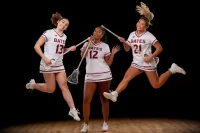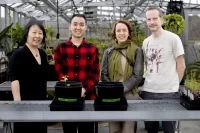
The ice on Lake Andrews has melted and the last piles of snow are almost gone. Which means it’s go time for the Bates groundskeepers. But what goes into waking up the campus from hibernation?
A lot, apparently, and they’re not just doing spring work, either. There’s some leftover tasks from the fall, like raking up leaves that eluded the team’s best efforts, got covered in snow, and now have reappeared.
Which means that folks like Jeremy Lavertu and his fellow members of the Facility Services grounds and maintenance team spend most of their time outside these days. Which is not too bad, he says.
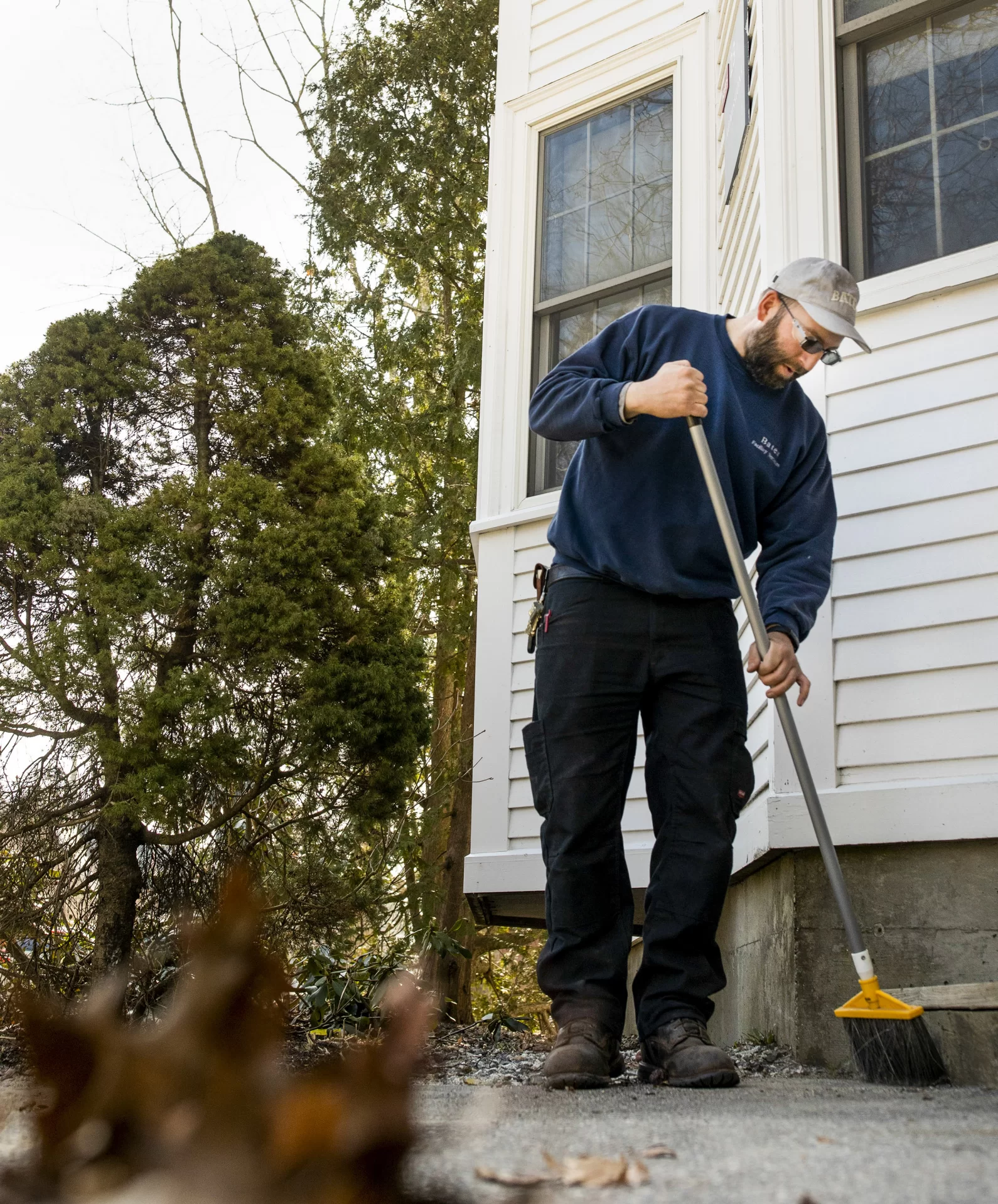
Lavertu is a grounds and maintenance lead who focuses on campus horticulture. “The work makes me happy,” he says. “I like the trees and the plants and the flowers — and the camaraderie of the people around me helps a lot.”
Each fall, as Lavertu explains, it’s a race to get as many leaves off the ground as possible before the first snow storm comes to campus. And each spring, it’s another race to clean up the campus and get it looking sharp, with a focus on Commencement in May.
In the fall, it’s all hands on deck. With rakes, shovels, backpack leaf blowers, and the fondly dubbed “suck wagon” used to literally suck up fallen leaves, the dozen or so members of the grounds and maintenance team, who are led by manager Mike Fox, fan out across campus to get the grounds ready for winter.
Lavertu estimates they pick up over 240 cubic yards of leaves every fall, which is far too much for campus use, including composting, so the groundskeepers send most loads of leaves to a city-owned quarry on the River Road south of town.
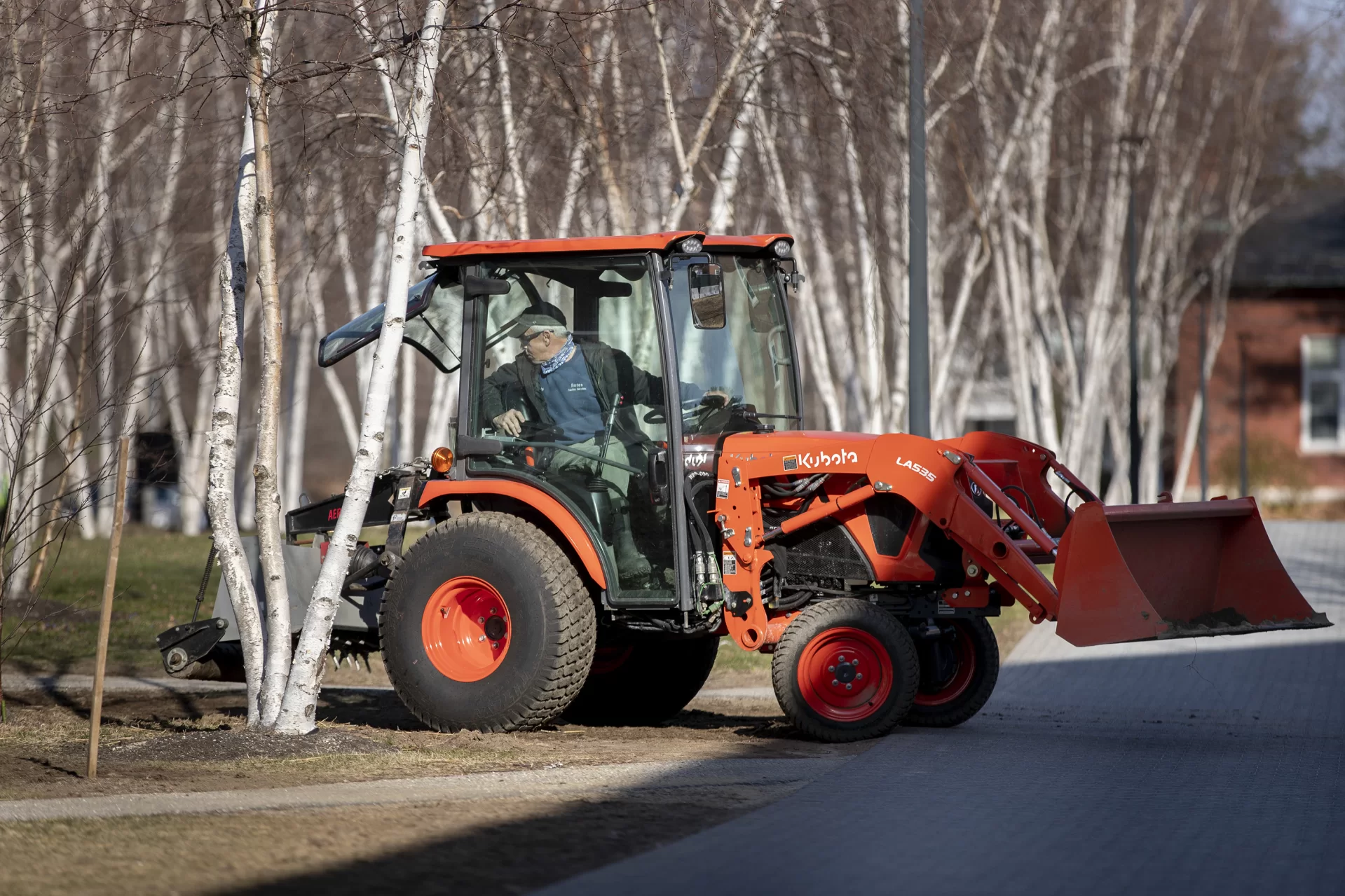
Now it’s spring cleanup time. In recent days, groundskeepers wielding power brooms have scoured campus walks to remove the sand that made the walkways safe in the ice and snow. There are also flower beds that need tending and tree branches and trash to clean up (oh, all those face coverings).
Then there’s the grass. With the ongoing renovation of Dana Chemistry Hall disrupting foot traffic on both sides of the building — on Alumni Walk and the Historic Quad — some grassy areas have been trod over, creating patchy sections that need to be re-grown in addition to the usual bare spots along walkways where winter plows have taken their toll.
The re-seeding process is three-fold. First, groundskeepers aerate the soil that will be seeded. On Wednesday, that was lead groundkeeper Mike Adams’ job as he maneuvered a Kubota tractor with an AERO-vator attachment around the birches on Alumni Walk.
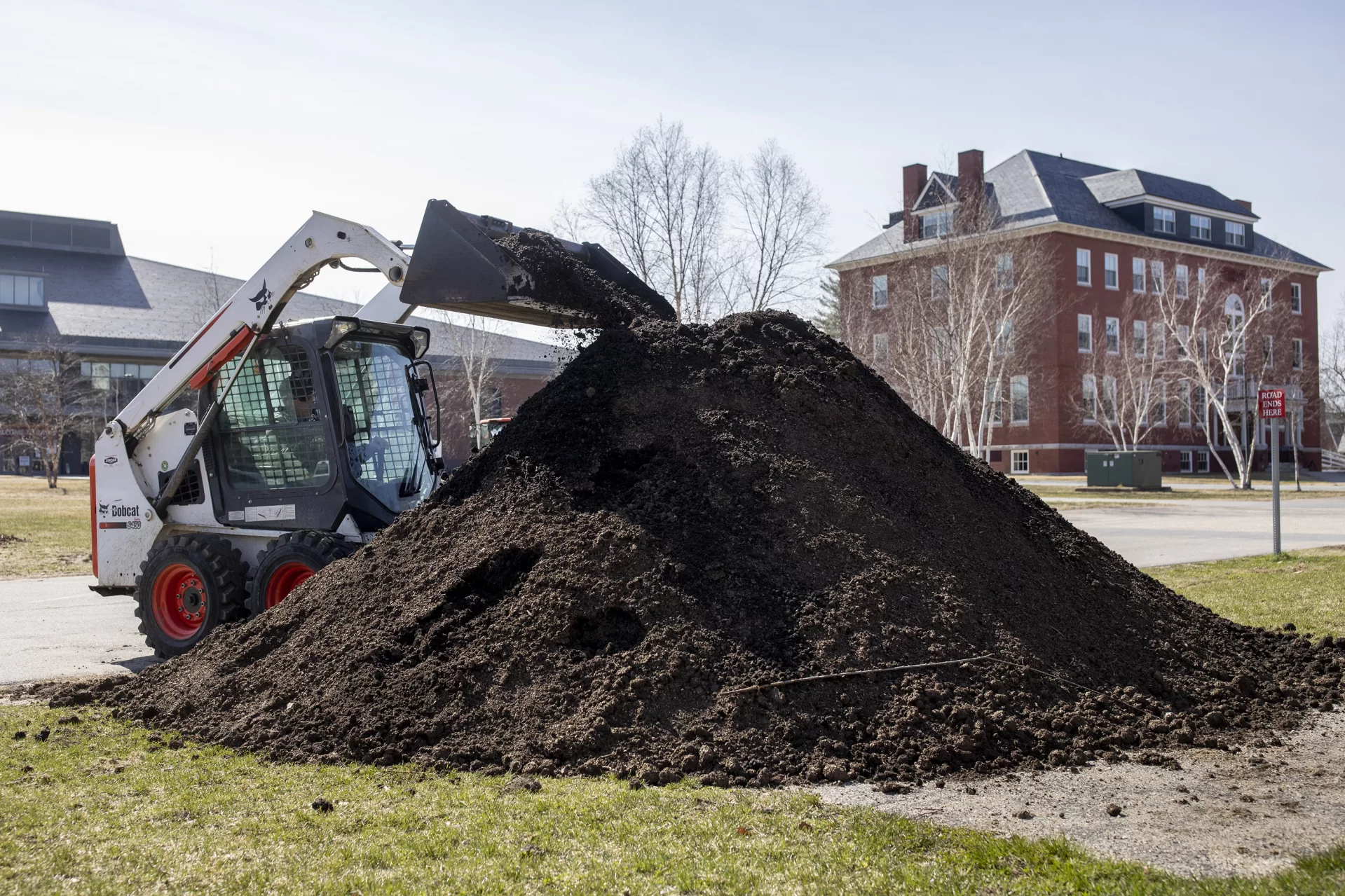
After the soil was aerated, others followed with walk-behind Anderson broadcast spreaders filled with a three-way mix of grass seed: a fescue blend, for its heat and drought tolerance; fast-germinating perennial ryegrass; and winter-hardy Kentucky bluegrass that’s good at self-repairing damage done by traffic or disease.
Then loam, which is a mix of sand, silt, and clay valued for its capacity to hold moisture while still draining easily, was spread over the seed. Finally, up went stakes and orange flags as a visual reminder: Don’t walk on the grass!
Even the healthy carpets of grass need sprucing up, which is accomplished by raking through the grass, loosening up the plants and the topsoil, and letting them breathe the fresh spring air.
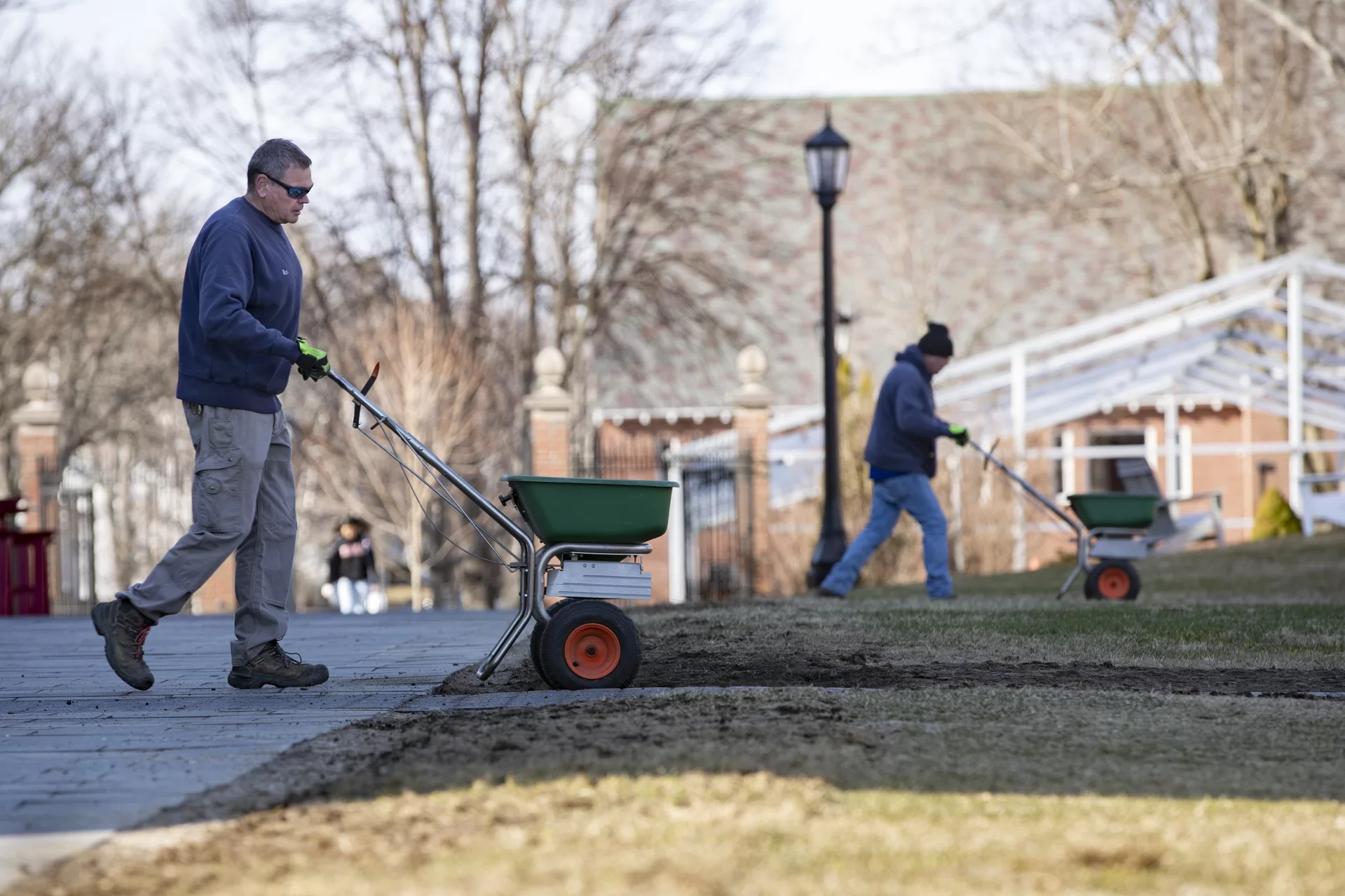
“I think that helps significantly,” says Lavertu. “My friend, Adam, he said to me, ‘The grass likes when you run a comb through its hair.'”
While those patchy areas of re-seeded grass should be avoided, there are plenty of spots on campus to lounge in the sun, feel the spring breeze, or enjoy the little purple Scilla blooms peeping up out of the green.

